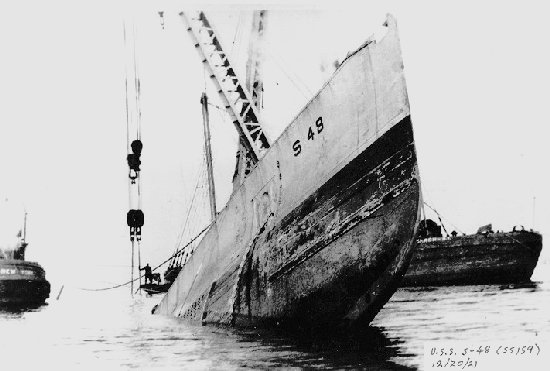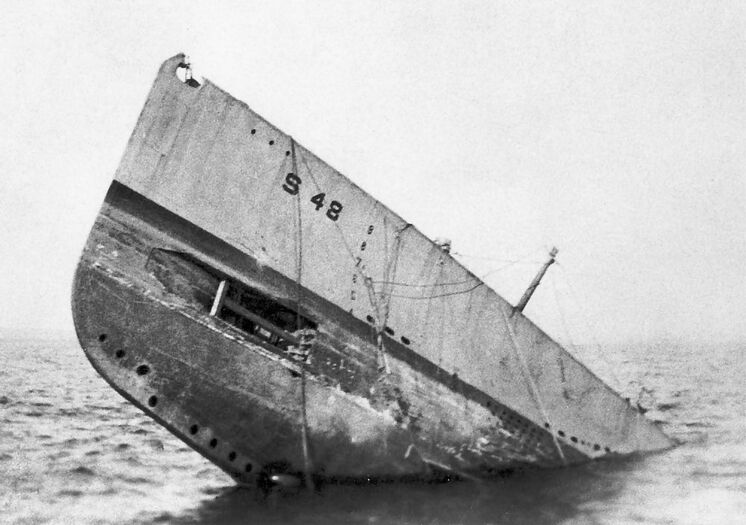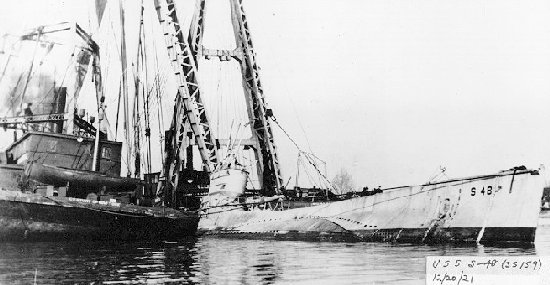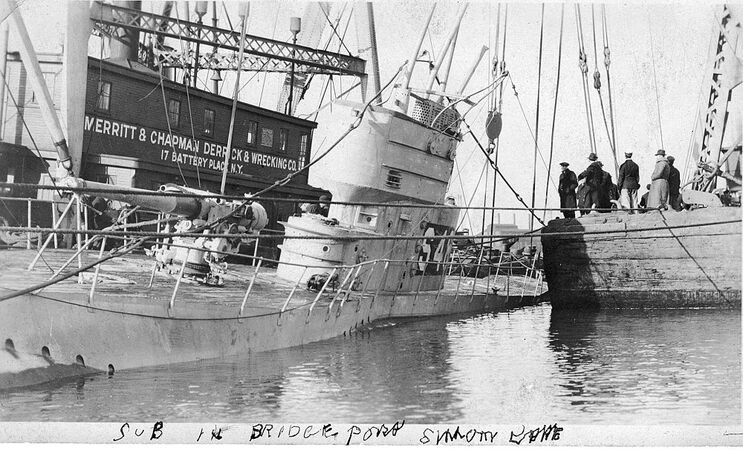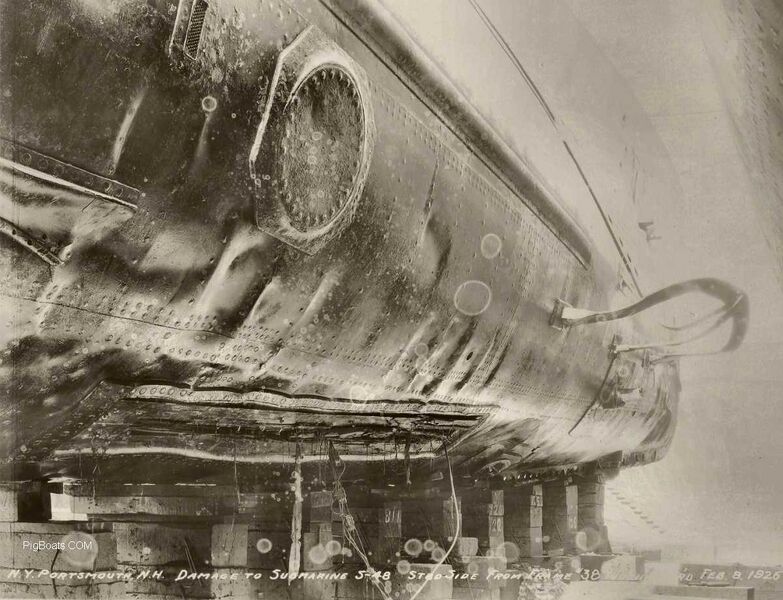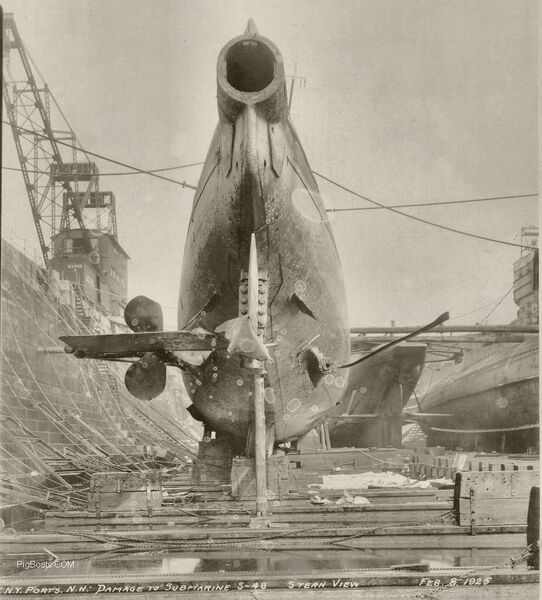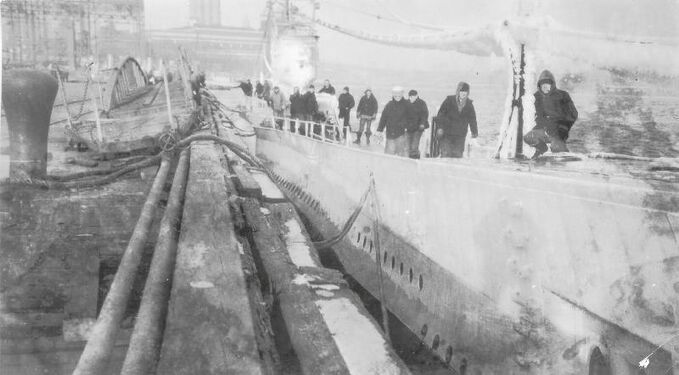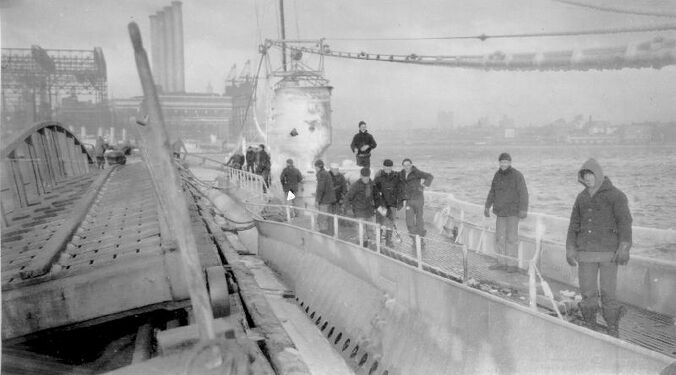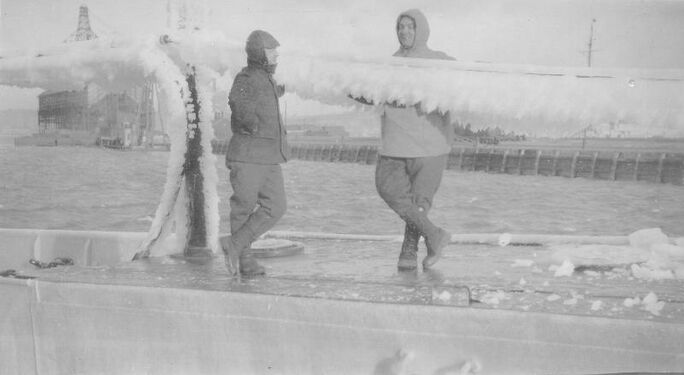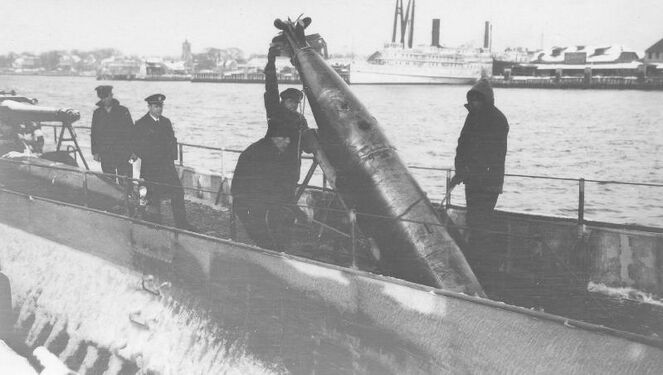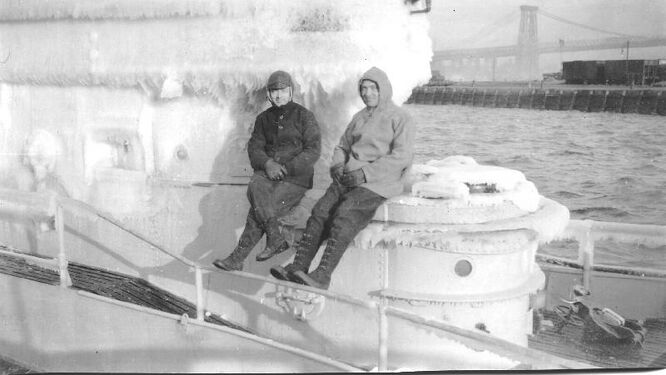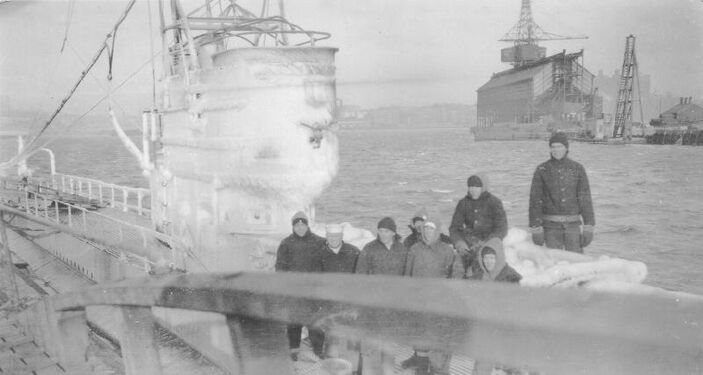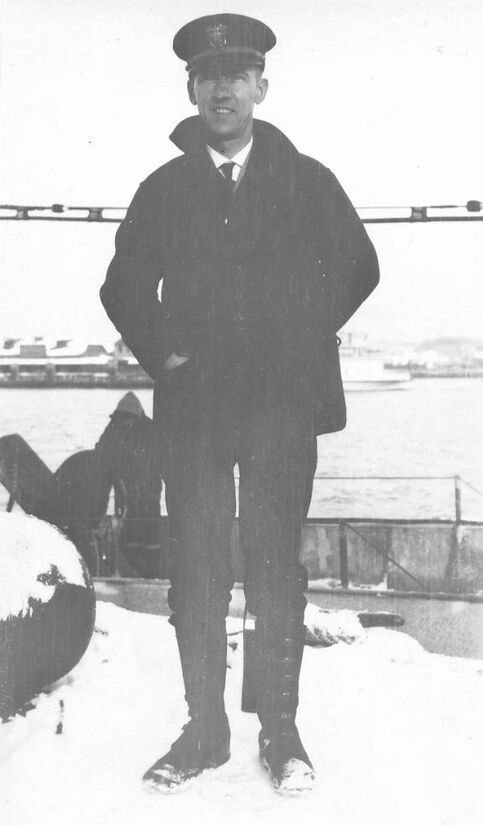S-48: Difference between revisions
Pbcjohnston (talk | contribs) Added photo and caption |
Pbcjohnston (talk | contribs) Added photos and captions |
||
| Line 133: | Line 133: | ||
[[File:Red bar sub new.jpg]] | [[File:Red bar sub new.jpg]] | ||
<center> | |||
<gallery mode="packed" widths="350px" heights="250px"> | |||
File:S-48 ice 1.jpg | |||
File:S-48 ice 2.jpg | |||
File:S-48 ice 3.jpg | |||
File:S-48 ice 4.jpg | |||
File:S-48 ice 5 torp.jpg | |||
File:S-48 Ice 6.jpg | |||
File:S-48 ice 7.jpg | |||
</gallery> | |||
</center> | |||
<div style="text-align: justify;"><span style="color:#00008B">This is a series of seven photos likely taken during December of 1928 or early January, 1929, after the S-48 had been re-commissioned but before she left for exercises off Connecticut and Florida. These photos seem to have been taken over several days, as the crew are wearing different uniforms in some of them. It was an icy cold and snowy day in Maine/New Hampshire, yet the crew seem to be enjoying themselves. Some of the S-48's new features can be seen, such as the extra length and the high gunnels around the forward deck. In the third and sixth pictures the two men are likely the Commanding Officer, LT Alf O.E. Bergesen, and the Executive Officer LT William N. Meyer. In the fifth picture the crew is loading two Mk 10 torpedoes into the forward torpedo room. | |||
<small>Photos in the private collection of Ric Hedman.</small> | |||
[[File:Red bar sub new.jpg]] | |||
<center> | |||
<gallery mode="packed" widths="450px" heights="550px"> | |||
File:S-49 CO.jpg | |||
File:S-48 XO.jpg | |||
</gallery> | |||
</center> | |||
<div style="text-align: justify;"><span style="color:#00008B">S-48's senior officers, taken at the same time as the photos above. Commanding Officer LT Alf O.E. Bergesen on the left, with Executive Officer LT William N. Meyer on the right. | |||
<small>Photos in the private collection of Ric Hedman.</small> | |||
[[File:Red bar sub new.jpg]] | |||
[[File:S-48 officers and gun.jpg|left|500px]] | |||
<div style="text-align: justify;"><span style="color:#00008B">S-48's senior officers shown here in a warmer situation, possibly in Groton or Florida, March or April 1929. Bergesen is on the left, Meyer is on the right. There are two Chief Petty Officers behind them. The 4"/50 caliber gun is raised and the hatch in front of the gun leads to the forward battery compartment. | |||
<small>Photos in the private collection of Ric Hedman.</small> | |||
[[File:Red bar sub new.jpg]] | |||
[[File:S-48 panama canal.jpg|left|500px]] | |||
<div style="text-align: justify;"><span style="color:#00008B">S-48 in the Gaillard Cut of the Panama Canal, circa 1931. It is not clear which direction she is headed. Her raised bulwarks on the fore deck are visible and crew can be seen sitting on the deck just aft of the radio antenna stanchion. Other crew can be seen on the aft deck. Maybe line handling parties, they may be approaching locks. | |||
<small>Photos in the private collection of Ric Hedman.</small> | |||
[[File:Red bar sub new.jpg]] | |||
[[File:S-48 panama port.jpg|left|500px]] | |||
<div style="text-align: justify;"><span style="color:#00008B">S-48 alongside the pier in Coco Solo, Panama, March 1931. An awning has been thrown over the aft radio wires in an attempt to provide some relief from the oppressive tropical sun of Panama. | |||
<small>Photos in the private collection of Ric Hedman.</small> | |||
[[File:Red bar sub new.jpg]] | |||
[[File:S-48 1933.jpg|left|500px]] | |||
<div style="text-align: justify;"><span style="color:#00008B">A July, 1933 photo of S-48, likely in the vicinity of Coco Solo, Panama. The dark rectangle on her starboard bow is the recessed housing for the standard Navy stockless anchor. | |||
<small>U.S. Navy photo.</small> | |||
[[File:Red bar sub new.jpg]] | |||
[[File:S-48 black.jpg|left|500px]] | |||
<div style="text-align: justify;"><span style="color:#00008B">A lower resolution photo of S-48 in March, 1941, somewhere in the western Atlantic. S-48 had spent 4½ years in inactive reserve in Philadelphia. She had been recommissioned in December 1940 as the situation in Europe deteriorated. She is now painted the standard black and has only her hull number showing topside. | |||
<small>U.S. Navy photo.</small> | |||
[[File:Red bar sub new.jpg]] | [[File:Red bar sub new.jpg]] | ||
Revision as of 18:05, 22 August 2023
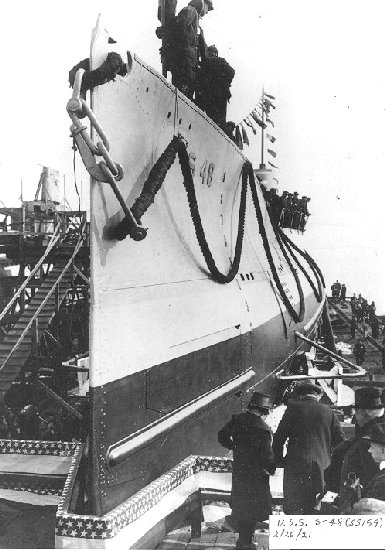
U.S. Navy photo NH 108448 courtesy of the NHHC.
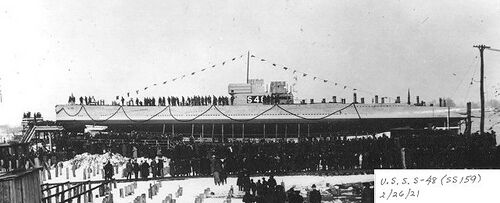
U.S. Navy photo NH 108453 via the NHHC.

There is another woman in tribal dress on the left and she is wearing a number of beaded necklaces. On her dress on the lower front is a swastika. It has nothing to do with the Nazi party at this time. It is an ancient symbol that has history going back thousands of years and has various meanings depending on the region of the world it appears. The word swastika derives from the Sanskrit "svastika" meaning "lucky or auspicious object". it is commonly used as a religious symbol in Hinduism and Buddhism. It was considered as a luck symbol in many cultures.
Photo in the private collection of Ric Hedman.
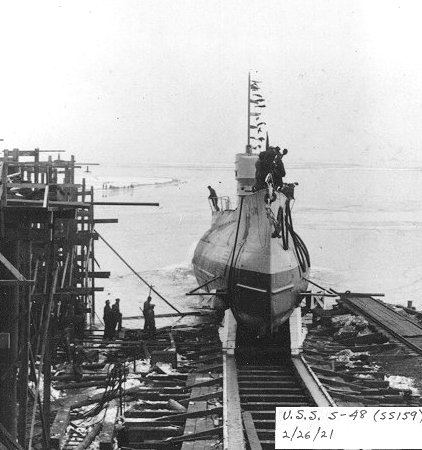
U.S. Navy photo NH 108451 courtesy of the NHHC.
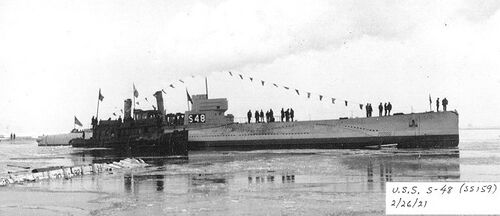
U.S. Navy photo NH 108449 courtesy of the NHHC.
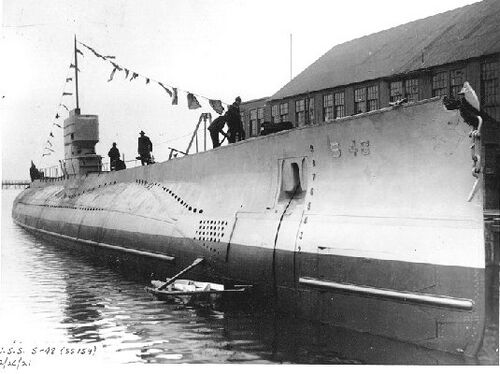
U.S. Navy photo NH 108450 courtesy of the NHHC.
-
U.S. Navy photo.
-
Photo courtesy of T. Gray Curtis.
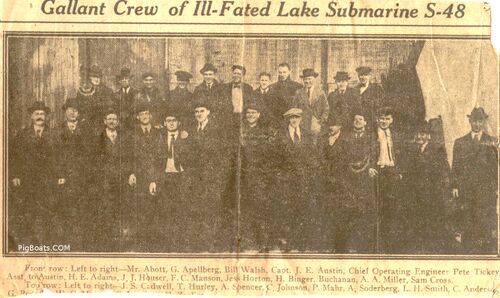
Photo in the private collection of Ric Hedman.
-
U.S. Navy photo.
-
Photo in the private collection of Ric Hedman.
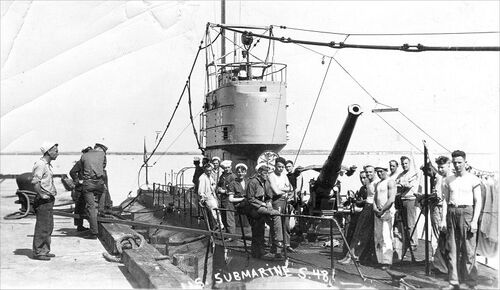
Photo in the private collection of Ric Hedman.
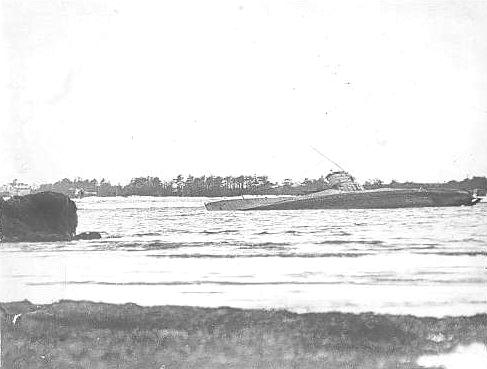
Photo in the private collection of Ric Hedman.
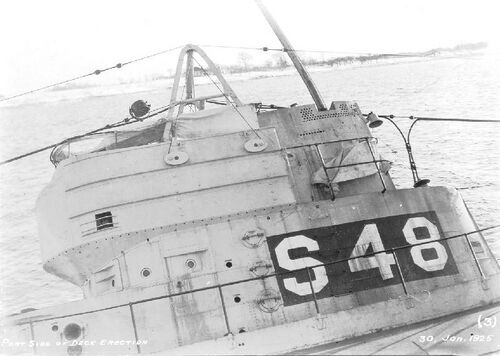
Photo in the private collection of Ric Hedman.
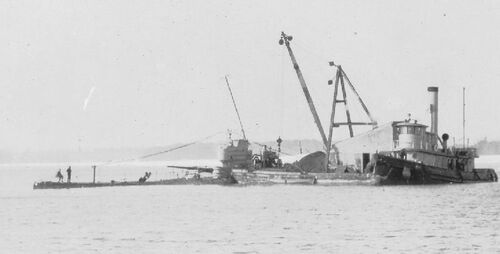
U.S. Navy photo.
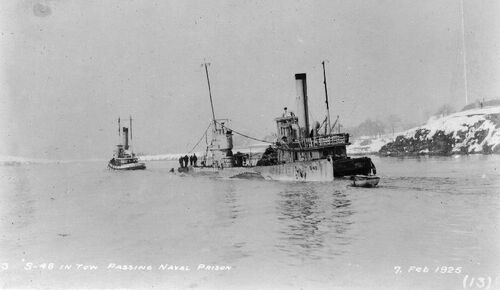
U.S. Navy photo.
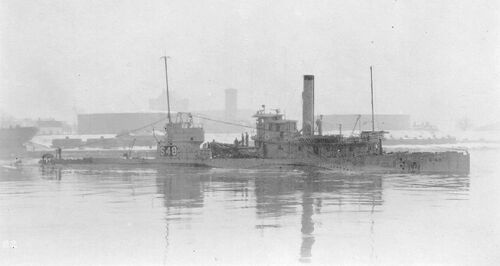
U.S. Navy photo.
U.S. Navy photos.
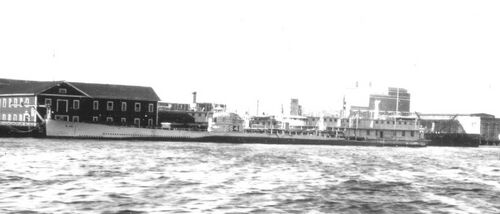
Photo in the private collection of Ric Hedman.
Photos in the private collection of Ric Hedman.
Photos in the private collection of Ric Hedman.
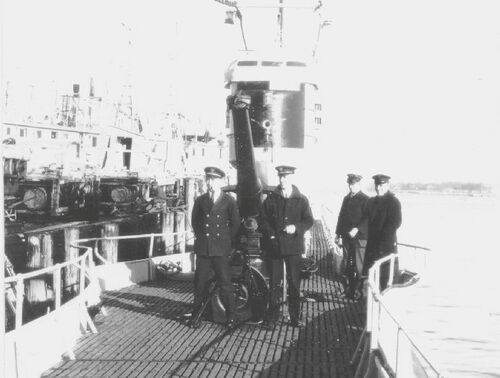
Photos in the private collection of Ric Hedman.
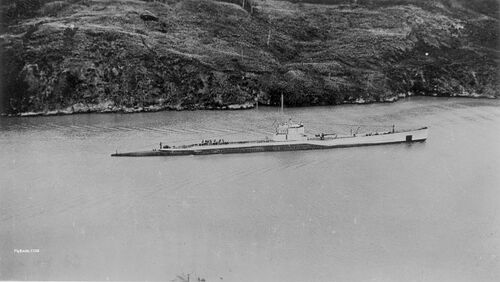
Photos in the private collection of Ric Hedman.
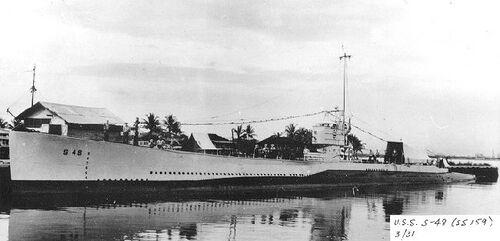
Photos in the private collection of Ric Hedman.
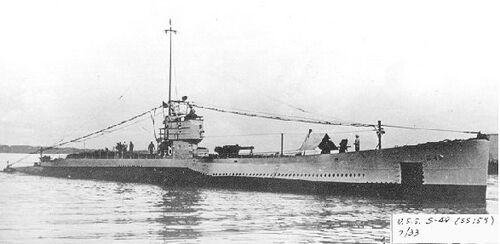
U.S. Navy photo.
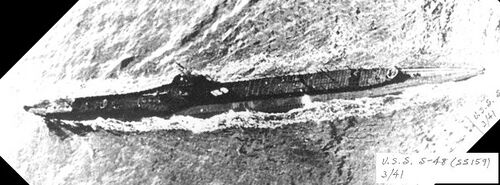
U.S. Navy photo.
Page created by:
Ric Hedman & David Johnston
1999 - 2023 - PigBoats.COM©
Mountlake Terrace, WA, Norfolk, VA
webmaster at pigboats dot com

